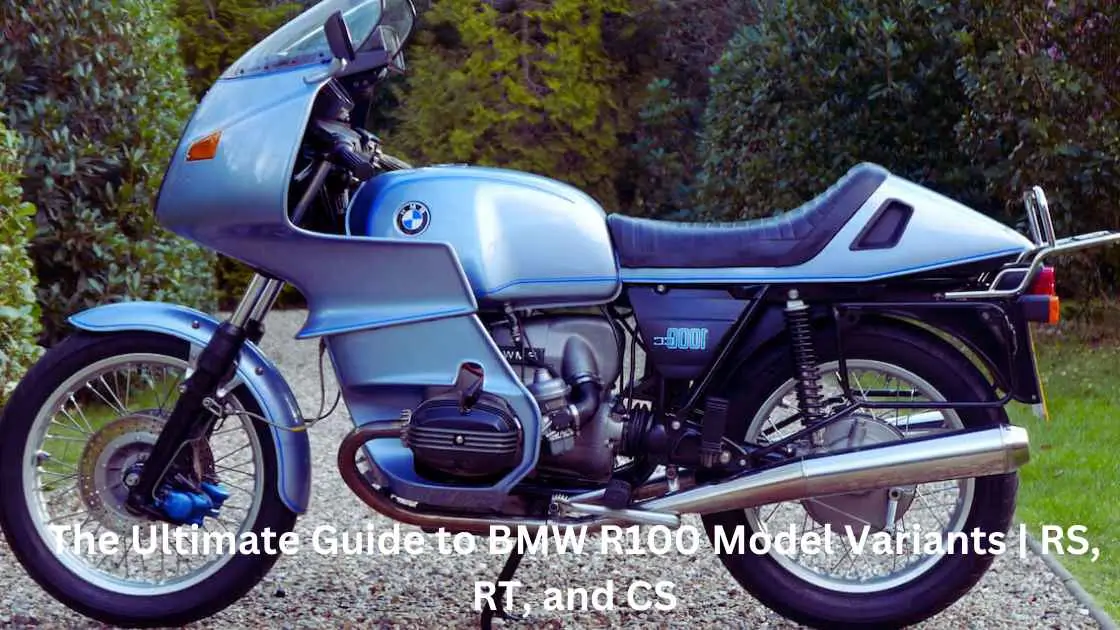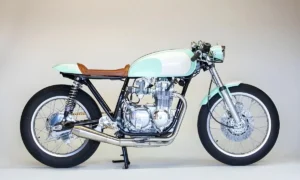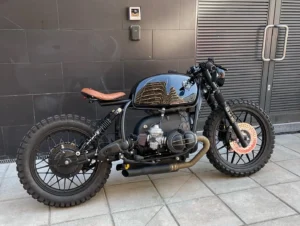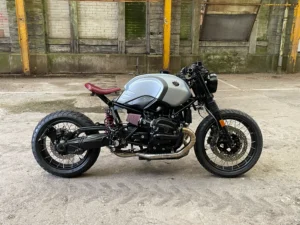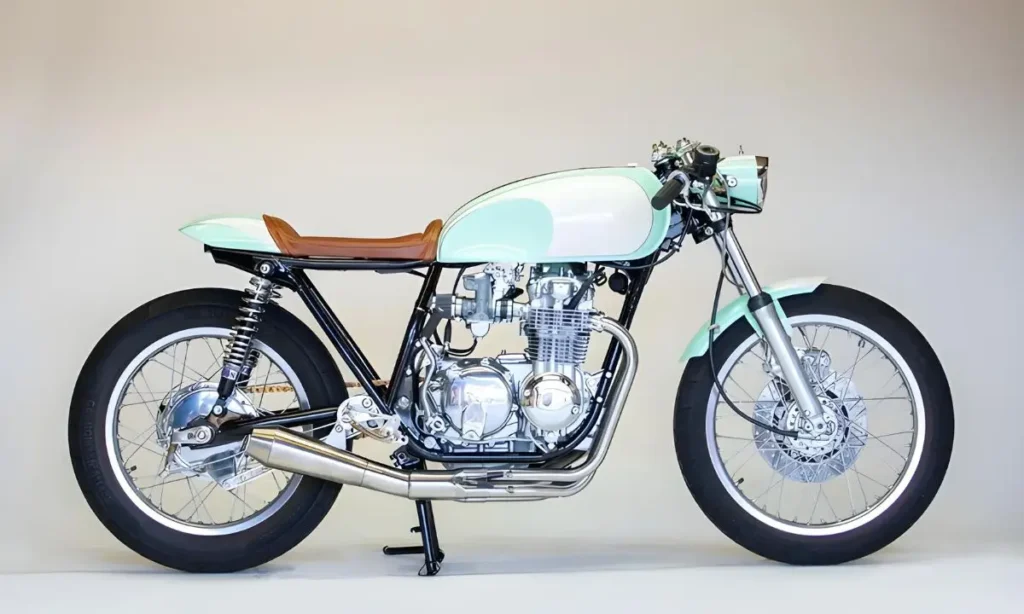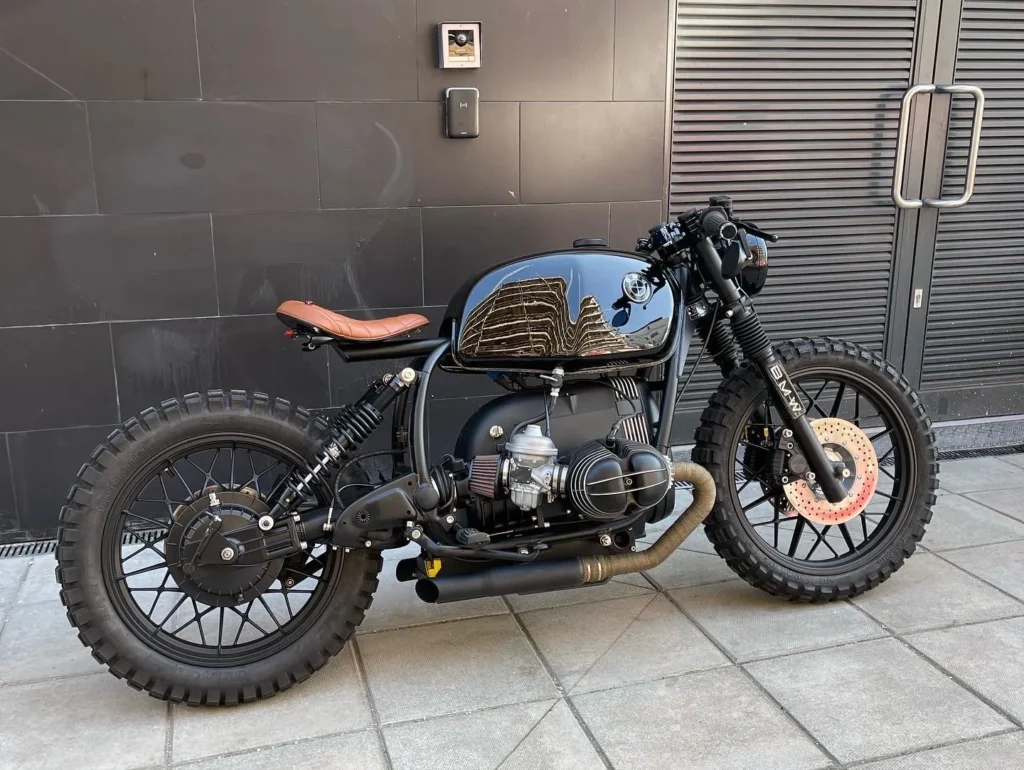Table of Contents
ToggleHey, motorcycle fan! Today, we’re talking about something cool—classic BMW motorcycles, especially the BMW R100 series. If you’re looking for a vintage bike that’s got style, power, and top German engineering, you’ve probably heard of the BMW R100 models: the RS, RT, and CS. But what’s the difference between these bikes? Why do some people love the R100RT for long trips, while others prefer the sporty feel of the R100RS or R100CS?
It might seem confusing, but don’t worry. I’m here to help! This guide will explain the differences between these models, what riding them feels like, and how to keep them in top shape. Whether you’re a pro rider or new to vintage bikes, this guide will make things clear. Let’s jump in!
BMW R100 Series: History of the Iconic Vintage BMW Motorcycles
Let’s go back to the 1970s. BMW was known for making solid but simple motorcycles. Their boxer engines were smooth and quiet. But by the mid-70s, things changed. Japanese brands were making fast, multi-cylinder bikes, and BMW had to keep up.
In 1976, BMW launched the /7 series, including the famous R100 models. These bikes were not just small updates; they were a big leap forward. They still used the classic BMW air-cooled boxer engines but with better performance. They had bigger engines, new suspension, and sleeker designs. The R100 series became great for long trips and fun riding.
BMW didn’t stop there. They quickly made different models for different riders. This is where the R100RS, R100RT, and R100CS came in. Each bike had something special. The RS was for sporty touring, the RT for long-distance comfort, and the CS for a lighter, faster ride. Let’s look at each one in more detail.
BMW R100RS: The Perfect Sport-Touring Motorcycle for Long-Distance Rides

The BMW R100RS is for riders who love speed, long trips, and style. Released in 1976, this bike was a big deal. Designed by Hans Muth, it was the first motorcycle to have a full fairing attached to the frame. What does that mean? It means this bike was made to keep you safe from wind and weather while still being sporty. It gave riders the comfort of a touring bike, but with a bit more excitement.
The R100RS had a 70 horsepower engine and could reach speeds up to 125 mph. It was great for cruising at high speeds all day. The best part wasn’t just how fast it was. It was how smooth and steady the ride felt, thanks to the design of the fairing. BMW had already mastered “sport-touring” long before it became popular.
If you like road trips but still want sporty performance, the R100RS is for you. It balances speed and comfort, which is why many long-distance riders love it.
BMW R100RT: The Ultimate Touring Bike for Comfort and Long Rides

If you’re more about enjoying the ride than going fast, the BMW R100RT could be your perfect bike. Released in 1978, the R100RT is the bigger, more touring-focused version of the R100RS. It uses the same engine and frame, but that’s where the similarities stop. The RT has a larger fairing, which gives better wind protection. This makes long trips smoother and more comfortable.
What makes the R100RT special is its upright riding position. While the RS makes you lean forward for a sportier feel, the RT is all about comfort. The bigger fairing, higher windshield, and relaxed setup make it great for long rides, no matter the weather. It’s the ideal touring bike for someone who wants to travel across the country without getting tired.
The R100RT also performs well. Like the RS, it has 70 horsepower and can easily handle highway speeds. But its real strength is in how smooth and comfy it feels on the road. The suspension and seat are designed for comfort, making it a great choice for long-distance riders.
If you’re planning a road trip or need a reliable bike for commuting with lots of luggage, the R100RT should be high on your list.
BMW R100CS: The Sporty and Lightweight Classic BMW for Fun and Speed

The BMW R100CS is the sportiest model in the lineup. The “CS” stands for “Classic Sport,” and it fits the name. Released in the early 1980s, this bike was made for riders who wanted the power and reliability of the R100 series but in a simpler, lighter design. The CS doesn’t have the big fairing of the RS or the touring focus of the RT. It’s all about enjoying the ride.
With a 70 hp engine, the R100CS is just as strong as the other models. But it feels quicker and lighter, making it more fun to ride. Its higher RPMs give it a sportier feel, which is great for riders who like a more aggressive style. This bike is perfect for anyone who wants to feel the power of BMW’s classic engine without all the extras of a touring bike.
The R100CS is ideal for short trips, twisty roads, or anyone who loves a sporty, quick ride. If you prefer a hands-on riding experience with fewer distractions, this model is for you.
Key Differences Between BMW R100RS, R100RT, and R100CS Models
Now that we’ve looked at each bike, let’s break down the key differences. Each bike gives a unique experience, so it’s important to see which one matches your style.
- Performance:
All three bikes have the same 980cc engine with 70 horsepower. But the R100CS feels sportier because it’s lighter and has higher RPM power. - Comfort:
The R100RT is the most comfortable for long rides. It has an upright position and a large fairing. The R100RS balances sport and comfort. The R100CS is the most stripped-down and sporty of the three. - Design & Fairing:
The RS has a full fairing, and the RT has even more wind protection. The CS is simple, with little bodywork.
The right bike depends on your riding style. If you like long-distance comfort, choose the R100RT. If you want a sportier bike, go with the R100RS. And if you prefer a simple, sporty ride, the R100CS is for you.
How to Maintain Your BMW R100 | RS, RT, and CS Maintenance Guide
Let’s talk about maintenance. Owning a classic bike like the BMW R100 series is not just about riding. It’s also about keeping the bike in great shape. A well-maintained R100 can last for decades. Many riders have put over 200,000 miles on these bikes. So, if you’re thinking of getting one, it’s important to understand the upkeep.
One of the best things about the BMW R100 models—whether it’s the RS, RT, or CS—is how solid they are. These bikes were built to last, which is why they’ve stayed popular for so long. But, like any old machine, they need some care. Here’s what you should know:
1. Regular Oil Changes
First, oil is the lifeblood of these air-cooled engines. Changing the oil and filter every 5,000 miles is important to keep the engine in good shape. This is one of the easiest and most important maintenance tasks. Always use a genuine BMW oil filter. Cheaper filters may cause problems later on.
2. Valve Adjustments
Another important task is adjusting the valve clearance. The BMW R100 series uses a simple screw-and-locknut system to adjust the valves. Because of the flat-twin engine layout, reaching the top of the engine is easy. If the engine gets too quiet, it might mean the valve clearances are closing up, which can damage the valves. So, this is one adjustment you should not skip.
3. Brake Maintenance
The brakes on the R100 models are a little different depending on the year. For example, before 1981, the front brake’s master cylinder is under the fuel tank. This makes it harder to maintain. After 1981, it is on the handlebar, making it easier to work with. If you want to fix or keep one of these bikes in good shape, think about upgrading to better brakes, especially if you plan to ride often.
4. Gearbox and Final Drive Care
On models made before 1980, the gearbox sometimes has problems. The selector spring can break, and fixing it needs a full teardown. But once fixed, the gearbox works great. It is also important to grease the spline often to avoid wear. BMW parts are still available, but remember that real parts can cost more, even though they are dependable.
5. Bodywork and Parts Availability
Let’s talk about bodywork. If you have an R100RS or RT with a full fairing, remember that new parts for these old fairings are no longer available. You’ll need to look for used parts or check with BMW specialists. The good news is there are many forums and resources where you can find what you need, but you may have to search a bit.
By staying on top of these maintenance tasks, your BMW R100 will keep running well and keep its value. These bikes aren’t just for riding—they’re part of history.
Buying Guide: How to Choose the Right BMW R100 Model for You
So, you want to buy a BMW R100. Whether you’re after the sporty RS, the touring RT, or the simple CS, there are a few things to think about before you spend your money.
1. Condition and History
First, the condition is key. Classic bikes like the BMW R100 can range from near perfect to needing a full rebuild. It’s best to find a bike with a good service record. Look for receipts or logs that show the owner cared for it. If the bike has been sitting in a garage for years, it may take a lot of work to get it running again.
2. Common Issues to Watch for When Buying a Classic BMW R100
Every classic bike has its quirks, and the BMW R100 is no different. Here are a few common issues to watch for:
- Valve Seat Wear: If the engine is too quiet, it could mean valve seat problems. If not fixed, this can burn out the valves.
- Gearbox Issues: For bikes made before 1980, check the gearbox selector spring. It’s a weak point but easy to fix.
- Cracked Wheels: Early R100 models with cast front wheels may develop cracks where the spokes meet the hub. BMW recalled them in the 1980s, but it’s still something to check.
3. Price Range
The price of a BMW R100 can vary based on its condition. A perfect R100RS or R100RT might cost between £2500-£3500, while one that needs work could be between £1000-£2000. Keep in mind, fixing up the bike can add to the cost, especially if you need to replace big parts or rebuild the engine. Always include repair costs when planning your budget.
4. Original vs. Modified
Some owners like to change their R100s, adding better brakes or modern parts. While this can help performance, some people prefer bikes that are close to the original. If you care about resale value, choose a bike that hasn’t been changed too much. Small upgrades like modern brakes or new suspension can make the bike more fun to ride without lowering its value.
Buying a classic BMW isn’t just a purchase—it’s an investment. Take your time, ask questions, and walk away if something feels wrong. There are plenty of R100s out there, and with patience, you’ll find the right one.
BMW R100 Models: Which Classic Motorcycle Is Right for You?
So, which one will you choose—the R100RS, R100RT, or R100CS? It depends on what kind of rider you are. If you want high-speed touring with a bit of sport, the R100RS is for you. If you like long, comfortable rides, the R100RT is the better choice. And if you want a simple, sporty ride, the R100CS is light and easy to handle.
In the end, you can’t go wrong. Each model has its own charm. No matter which you choose, you’re getting a classic bike that still turns heads and rides well today. Owning a BMW R100 is more than just riding—it’s part of a long tradition of craftsmanship and adventure.
Whether you’re fixing one from scratch or adding it to your collection, the BMW R100 is more than just a motorcycle—it’s a symbol. Enjoy the ride, and I hope to see you out on the road with one of these timeless machines!
FAQs
What are the main differences between the BMW R100RS, R100RT, and R100CS?
The BMW R100RS is a sport-touring bike with a fairing that blocks wind. It’s for riders who like speed and handling. The BMW R100RT is for long trips. It has better wind protection and is more comfortable. The BMW R100CS is the lightest and quickest of the three, with no heavy fairing. It’s for riders who want a more active ride.
How fast can the BMW R100RT and R100RS go?
The BMW R100RS can go up to 125 mph. It’s good for high-speed trips. The R100RT can reach around 115 mph, but it’s more comfortable for long rides because of its bigger fairing.
What are common maintenance tasks for BMW R100 motorcycles?
For the BMW R100, you need to change the oil every 5,000 miles. Adjust the valves to avoid wear and check the brakes, especially on older models. Grease the spline in the final drive and check for gearbox wear.
What should I check when buying a used BMW R100?
When buying a used BMW R100, look for valve seat wear, gearbox problems (especially in bikes before 1980), and cracks in the front wheels. Also, make sure the bike has a good maintenance record, especially if it has high mileage.
Is the BMW R100RS comfortable for long-distance riding?
Yes, the BMW R100RS is comfortable for long trips. Its fairing gives great wind protection at high speeds. While it’s sporty, it still offers a smooth ride for long distances.b

